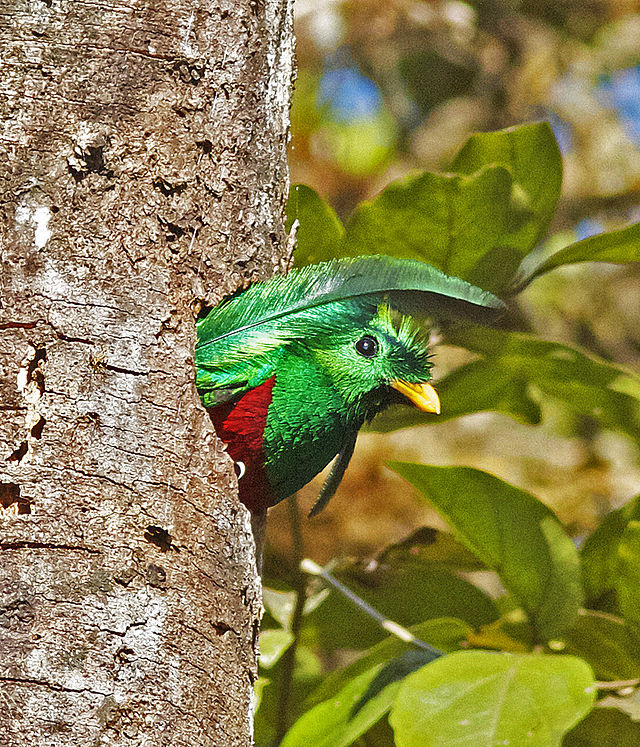The Re:Tweeting pyramid
| This morning Miranda Krestovnikoff presented a bird that has been legally protected for hundreds, if not thousands of years, and has been venerated as a god. In the latest of our Re:Tweets we look at the resplendent quetzal of Central America. Click the button to hear the original Radio 4 Tweet of the Day. ...and from today, all our Re:Tweets are saved in the Features section - hover over the drop-down menu! |
| The resplendent quetzal was considered divine, associated with the feathered serpent god Quetzalcoatl by Pre-Columbian civilizations. Its iridescent green tail feathers, symbols for spring plant growth, were venerated by the ancient Aztec and Maya who believed the quetzal was the god of the air and a symbol of goodness and light. There is a theory that the Mayans built their pyramids to act as giant resonators producing strange echoes that imitate natural sounds. At Chichen Itzá, Mexico, the main pyramid famously Re:Tweets the sound of a quetzal in response to a hand-clap, as demonstrated in the video. | |
Declercq's calculations show that, although there is evidence that the Mayans engineered the pyramid to produce surprising sounds, they probably couldn't have predicted exactly what they would resemble. Declercq noticed that when visitors climbed the steps of the 24-metre high pyramid, the echoes seemed to sound just like rain falling into a bucket of water.
He suggests that this, rather than the quetzal call, could have been the aim of El Castillo's acoustic design. "It may not be a coincidence," he says, “the rain god played an important part in Mayan culture.
"Either you believe it or you don't." Declercq is now sceptical of the quetzal theory - not least because he has heard similar effects at other religious sites. At Kataragama in Sri Lanka, for example, a handclap by a staircase leading down to the Menik Ganga river produces an echo that sounds like ducks quacking.

 RSS Feed
RSS Feed
